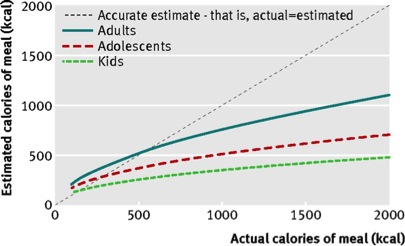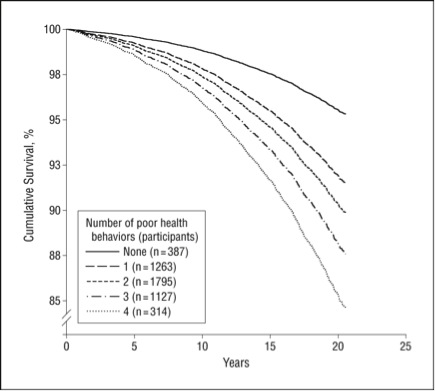Archive for the ‘Research and Health’ Category
Malaria Vaccine!
Today’s post is short. There was a report last week of a successful vaccine for malaria. The vaccine in its current form will present logistical challenges for wide spread use, but this is a start and my guess is that clever people in the biotech industry and various academic and government labs will figure something out. Currently there are about 7 billion people on Earth and about 60 million deaths per year. About 660,000 of these deaths are due to malaria, with about 86% of the deaths in kids less than 5. There are about 200 million clinical episodes per year, and the disease caused by infection with a protozoan (a type of parasitic microorganism) that is transmitted by mosquitos. About half of the world’s population is at risk. The map below shows the history of malaria eradication (pesticide, draining swamps etc.) since the middle 1800s. The dark blue areas are at risk as of 2010. There is also concern that this at risk zone might spread with global warming. Here is a link an excellent CDC site with facts on malaria.
Perspective
I started medical school in 1982, and if the preliminary success of the vaccine reported last week can be scaled up, it will be the biggest breakthrough since I started. The topic of vaccines also highlights the key role of prevention for both communicable and non-communicable diseases like diabetes, heart disease, obesity and many forms of cancers. The fact that much of the word once at risk for malaria is no longer at risk also shows the role of the environment, behavior, and public policy in preventing diseases of all types.
Top This Gary Player!
I have devoted a couple of posts to 77 year old golf legend Gary Player and his lifelong devotion to fitness. In response to my most recent post a reader sent the video clip below about 86 year old gymnast Johanna Quass. I have been thinking about exercise and aging for a long time, but the clip below is among the most remarkable things I have ever seen. Clearly a lifetime of training, talent, and injury avoidance are required to make a performance like that happen. However, nothing like it happens without staying with it.
click here for video
I have been doing more body weight calisthenics and strength training over the last year, but this video has me thinking maybe I should take a tumbling class or start jumping rope again like I did in high school to improve my footwork for basketball. In the end, loss of strength and balance leads many older people to become frail and lose their independence, maybe we need to rethink what we tell middle aged people to literally keep them independent and off the floor.
Healthy After 65
Today’s post is a short one and focuses on a new CDC report on healthy life expectancy (HLE) at age 65. This differs from total life expectancy (LE) and is a measure of how long the average person can expect to life in reasonably good health after they hit 65. It is important because data like this can help individuals, families, governments, and other organizations think about health and other services that older people will need over time. The figure below shows estimates based on 2007-2009 data. For those who want to take a deeper dive, the report is full of all sorts of information on the effects of sex, state, and race on healthy life expectancy. In general women do better than men; there is substantial regional variation with issues in the South especially and blacks do worse than whites.
Here is the bottom line from the CDC report:
“For the total population at age 65 years, HLE was lowest among southern states. For all persons at age 65 years, the highest HLE was observed in Hawaii (16.2 years) and the lowest was in Mississippi (10.8 years). During 2007–2009, HLE as a percentage of LE for persons at age 65 years for the total U.S. population ranged from a low of 61.5% in Mississippi to a high of 78.2% in Vermont (Table). Conversely, the number of remaining years in fair or poor health for persons aged 65 years was 6.7 out of 17.5 years of LE for those living in Mississippi and 4.2 years out of 19.4 years for those living in Vermont.”
My bottom line is that this regional and other differences noted in the report are not going to be solved by medical care alone and that some areas of the country need aggressive public health interventions to catch up. These topics have been covered many times in earlier posts on life expectancy.
Wheat Belly & Low Carb Diets
A colleague who wants to lose some weight sent me an e-mail asking about the “Wheat Belly” diet which advocates cutting wheat based products and foods from your diet. A book based on this concept is a best seller and among other things there is discussion in the book about how “addictive” wheat based products are and some potentially bad biological effects of high yield varieties that have emerged through selective breeding over the last 50-100 years. From what I can tell, this is just the latest iteration of the “low carb” approach to weight loss and dieting that has had a number of incarnations over the last 50 or more years. So, what did I tell my friend?
1) Low Carb Diets Reduce Variety
There is pretty good evidence that just restricting food variety reduces the amount we eat. Get rid of wheat based products and you restrict variety a lot. Here is a link to an animal study that makes this point:
“Thus, the present results suggest that limiting dietary variety, regardless of palatability, may be a useful strategy for weight loss in overweight and obese individuals by reducing caloric intake within individual meals.”
2) Carbohydrate Restriction & “Water Weight”
The pictures below are two photos taken a few days apart of Olympic 1500m swim champion Grant Hackett. On the left is a shot when he was tapered and after he had carbo loaded for a 10k open water swim (the swimming equivalent of a 26 mile marathon). The photo on the right is a few days later when he was back to his normal training. Along similar lines, it has been known for years that low carb diets lead to rapid weight loss because water is stored along with carbohydrate in the body. When the carbs are depleted the water goes with them. A study from the 1990s tracked this carefully over a few days of a very low calorie diet and showed a 4.3 kg (9 lb) weight loss almost entirely from changes in body water. A lot of the appeal of low-carb diets is this early and impressive weight loss. Don’t be fooled into thinking it is fat loss.
3) Feeling Full Helps
Dietary fat and protein probably make most people feel full for longer. The biology is complex and relates to how fast food leaves various parts of your digestive tract and a whole bunch of hormonal signals related to what makes us hungry and what makes us feel full. So, this is perhaps another reason that low carb diets seem to work. However, there is concern that low carb but high fat and protein diets work but are not optimal to reduce or control things like cholesterol. This too is a complex topic with a lot of individual variability. But feeling full for longer is good if you want to lose weight.
4) The Brain & Food Addiction
The way the brains of people who are obese or prone to overeat are stimulated by food or images of food is different. Does this mean they have a food addiction? Who knows, but the summary below does give us some hints about what the issues are and what might be done to address them.
“Prefrontal cortex areas linked to cognitive evaluation processes, such as evaluation of rewarding stimuli, as well as explicit memory regions, appear most consistently activated in response to images of food in those who are obese. Conversely, a reduced activation in brain regions associated with cognitive control and interoceptive awareness of sensations in the body might indicate a weakened control system, combined with hypo-sensitivity to satiety and discomfort signals after eating in those who are prone to overeat.”
Is this innate? Or does it happen over time. Is it biology or environment? My guess is that is probably both and that the brain can be rewired over time and with some effort. Self-control related to both diet and exercise seems to be the key for long term successful “losers”:
“These findings suggest that weight loss maintenance efforts can be improved by addressing challenges such as long-term self-monitoring and problem-solving skills, and that maintenance success might depend on how people think as much as what they do.”
What is interesting is that both the brain imaging studies and the behavioral studies both cite issues related to body perceptions and self-monitoring. Perhaps it is more than just will power and there is a “skill” and focus element to weight loss like most other things that are difficult to do.
5) Exercise & Physical Activity
Most of us don’t have the time, energy or motivation to train like an elite athlete and be a in a position to essentially eat all day long. However, there is some evidence that if we exercise a lot we might sit around more during the rest of the day and lose some of both the energy expenditure benefits and health benefits of exercising. So a key thing to remember is to both exercise and also build more low grade physical activity into your day.
Summary
Despite wave after wave of claims related to low carb diets, at some level if you have seen one you have seen them all. They clearly “work” at generating rapid weight loss, reducing dietary choice and they probably help people feel a bit fuller. However, the key to successful long term weight loss appears to be related to developing the skills and behavioral strategies needed to effect long term changes in diet, exercise and overall physical activity. What is interesting about my colleague is that he is highly successful, self-disciplined, and focused in many areas of his life. He is also seen as a problem solver by many co-workers. So, he has the general skill set needed to be a successful “loser”, and my bet is that he will be once he consistently applies these skills to his exercise and weight loss goals.
A View on Blood Doping
click here for video
Exercise vs. Aging
Almost all of the data I show in this blog comes from studies in humans or various population databases. I am going to make an exception today and show you some data about what happens when mice that are genetically modified to age early are also subjected to exercise training.
Mitochondrial Aging the Key?
One idea is that a prime driver of the aging process is a loss of mitochondrial function over time. The mitochondria are small energy factories in our cells. When they become defective the idea is that byproducts released from the mitochondria damage cells and cause aging. The picture below shows what happens when the system responsible for DNA proof reading in the mitochondria is absent in mice. The animal on left is a control while the animal on the right is aging prematurely due to the genetic alteration. The mice are called progeroid because they have features associated with a rare form of premature aging that is seen in humans called progeria.
Exercise Keep Mitochondria Healthy
Exercise keeps our mitochondria healthy as we age and it also stimulates muscle and other tissues to increase the number of mitochondria in each cell. So what happens when porgeroid mice exercise trained for 45 minutes per day three times per week for five months? The pictures below show the hearts of the mice. The panels on the left are from wild type (WT) that is genetically normal. The middle panels show an enlarged heart from porgeroid animal that was sedentary. The right panel shows that exercise training blunted the response seen in the sedentary animal.
The authors concluded that:
“Here we show that 5 months of endurance exercise induced systemic mitochondrial biogenesis, prevented mitochondrial DNA depletion and mutations, increased mitochondrial oxidative capacity and respiratory chain assembly, restored mitochondrial morphology, and blunted pathological levels of apoptosis in multiple tissues of mitochondrial DNA mutator mice. These adaptations conferred complete phenotypic protection, reduced multisystem pathology, and prevented premature mortality in these mice. The systemic mitochondrial rejuvenation through endurance exercise promises to be an effective therapeutic approach to mitigating mitochondrial dysfunction in aging and related comorbidities.”
These data and the conclusions drawn from this study clearly confirm and explain what is happening in the master athlete super agers we have discussed before.
Fast Food Calorie Counting
Today’s post is short and in preparation for the fact that many of us eat out more during summer vacation and when we are on the road doing all sorts of different things. The chart below is from a study of more than 3000 people in the New England area eating at national fast food chains. The key finding is that people in every age group under estimate how many calories they are eating when that grab a meal at a fast food outlet.
There is also recent evidence that better labeling reduces the number of calories purchased at fast food restaurants by women and not men. Finally, we tend to eat more when we eat out and the consumption of either pre-prepared food or eating out more are factors contributing to the obesity epidemic. The implications of this data are pretty obvious and start with clear labeling of the food we buy in whatever venue and then paying attention to the labels. Especially for men!
Health Guidelines: Are We Making Them Too Complicated?
In an e-mail titled “Too Close For Comfort…..” my Colleague Doug Seals sent me a link of a satire laced piece from the Onion about how hard it is to get people to change their lifestyles based on “studies” and scientific data. This Onion piece also intersects with some of the ideas in my last post related to the frustrating fact that guidelines frequently change as new information emerges. Other colleagues have mentioned to me that the sheer volume of goals and guidelines that are being released are at best confusing. That having been said, here are six health guidelines and ideas that have stood the test of time and are backed by solid evidence that is unlikely to change.
- Don’t Smoke.
- Be physically active and avoid sitting for prolonged periods of time. 150 minutes per week of moderate intensity (brisk walking) physical activity is the key number. If you have even less time, here is a link to a brief high intensity work out you can do with minimal equipment. Physical activity also blunts the impact of risk factors like high blood pressure, diabetes, and cholesterol on your health. In addition to protecting you from cardiovascular disease and diabetes, physical activity is the one thing that seems to reduce the risk and even slow the progression of cognitive impairment as we age.
- Don’t get fat. There are some caveats here but they are subtle and on a population wide basis medical problems associated with body weight really start to take off for people with BMIs greater than 30.
- Eat a bit better. I don’t think most people have to be a fanatic about diet, but watch how much red meat, fried/fatty foods, and sugar you consume. Eat more fruits, vegetables and whole grains. As I recently pointed out, do this and watch the pounds melt away.
- Don’t drink too much. One or two drinks most days are fine and may in fact be good for your overall health. However, more than that is a slippery slope.
- Stay engaged in life. People who have a sense of autonomy over their own destiny and connections with others tend to live longer. A bit of optimism is also a good thing.
Guideline Followers Live Longer and Age Slower
The figure below is from a 2010 paper that looked at the impact of four health behaviors (smoking, physical activity, drinking, diet) on survival over 20 years in about 5,000 adults from England and Scotland. Here are two key points from the paper:
- “Those with 4 compared with those with no poor health behaviors had an all-cause mortality risk equivalent to being 12 years older.”
- “The combined effect of poor health behaviors on mortality was substantial, indicating that modest, but sustained, improvements to diet and lifestyle could have significant public health benefits.”
Summary
What constitutes healthy behavior is pretty straight forward. If we address these six issues as individuals, via public health measures, and implement things like sin taxes and risk adjusted insurance premiums; our individual and collective health will improve dramatically.
You are currently browsing the archives for the Research and Health category.








